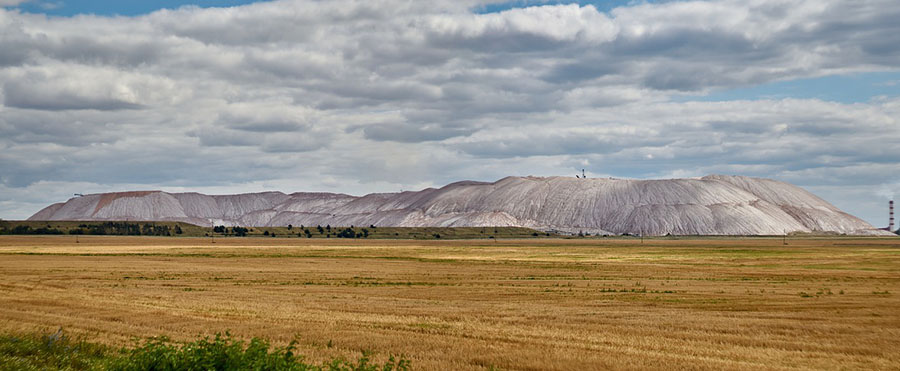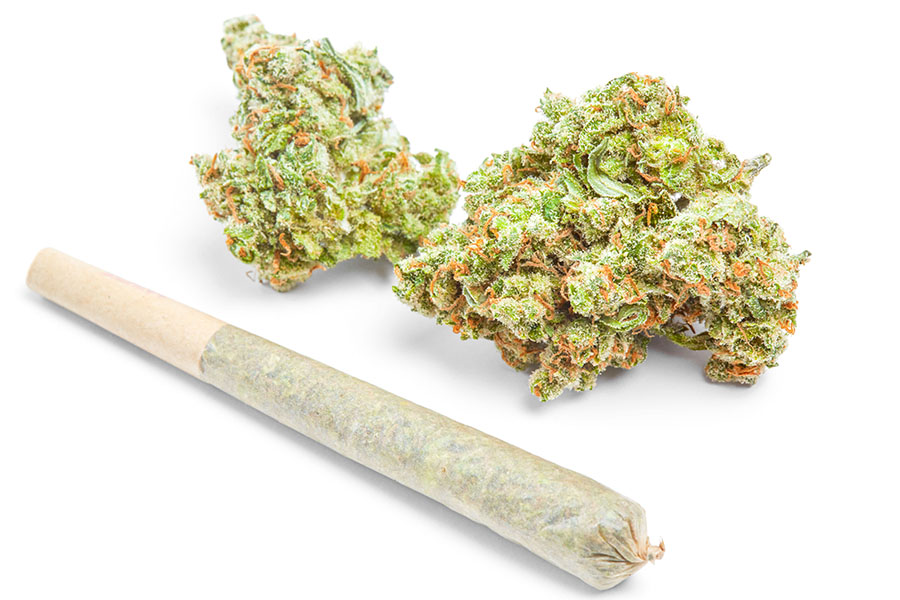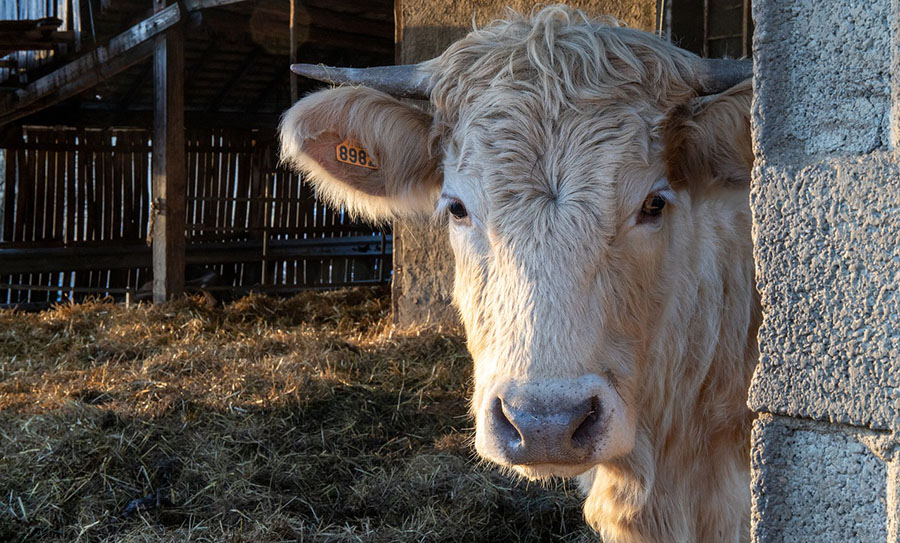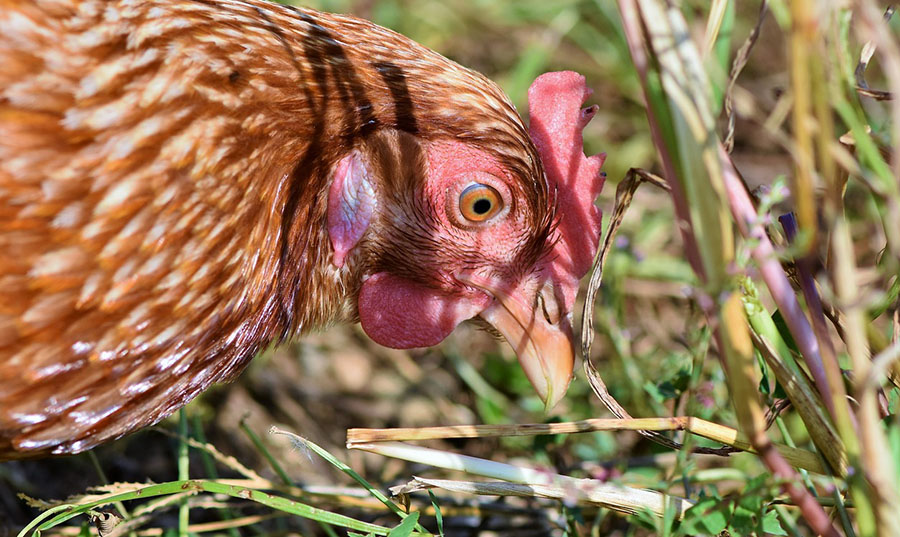TICKERS: AGU, AAA; ALLRF, CF, EPO, , , KRN, , POT, TNH
Richard Kelertas: Potash Demand High Through 2013
Interview
Source: JT Long of The Energy Report (8/11/11)
 Fed by rising food prices and increased fertilizer demand, potash juniors and producers could ride high for the next two-and-a-half years, says Richard Kelertas, a senior analyst at Dundee Securities. In this exclusive interview with The Energy Report, he separates the promising prospects from the companies that may not be able to get up to speed before global demand is satisfied.
Fed by rising food prices and increased fertilizer demand, potash juniors and producers could ride high for the next two-and-a-half years, says Richard Kelertas, a senior analyst at Dundee Securities. In this exclusive interview with The Energy Report, he separates the promising prospects from the companies that may not be able to get up to speed before global demand is satisfied.
The Energy Report: In your July fertilizer forecast, you pointed to a 0.9% food price index increase and a 3.4% meat price index increase. Those higher crop prices along with new potash price increases recently pushed through domestically and internationally make your prediction last May of $750/ton seem even more realistic. When might that occur and what countries are the main drivers for this?
Richard Kelertas: A peak could come anywhere from 18–24 months from now. Our thoughts are as follows: We are seeing very tight potash markets. The Chinese have been asking for more. The Indians have now settled a contract for significantly higher than what they wanted to pay. Farmers have been pressuring the government to make sure there is plenty of fertilizer—especially potash and urea—in the fields, but they also want to make sure it's at a half-decent price.
The supply is now getting out to the fields, but the price has gone up simply because there is a bit of a monopoly, with the major producers represented by Canpotex Ltd. Our view is that the price pressure will continue for the next 12–24 months. No major new capacity additions—brownfield or greenfield—are planned for the next two to three years. Really, the new capacity doesn't kick in until 2014–2015. So 2011, 2012 and 2013 are going to be very tight markets. That's on the fertilizer side.
On the food side, we have stock:use ratios that are very low. Crop prices are starting to recover although the second economic crisis we are going through now may cause those prices to ease off a little bit. Some crop harvests are going to be low throughout the world. The stocks of various staples will be tight for the next one to two years. So we think this is a perfect storm for fertilizer prices to continue to run up. It won't reach the level of the last run up in 2008–2009, but it is certainly a very buoyant market.
TER: What impact do short-term stock fluctuations and economic challenges have on both food prices and fertilizer prices?
RK: As you've seen in the past, it has had a short-term impact. If the fundamentals were weak to begin with—meaning crop stocks were high, harvests were very, very good throughout the world and inventories of nutrients were either at their 5–10 year averages or above—then you saw a significant downturn in nutrient and crop pricing along with usage. Farmers back off if crop prices aren't high enough because they won't get enough per-acre to justify putting in more nutrients. Plus, the bounce back in 2009–2010 and the beginning of 2011 was because of both strong fundamentals for fertilizers and crops and a tremendous amount of stimulus from governments that were pumped into the market. It remains to be seen whether governments still have those arrows in their quivers. I would suspect that this is going to be a little more drawn out. Several governments are near crisis situations. The European Central Bank has said it will buy Spanish and Italian bonds; that will certainly help for the time being. The real question is: Are international consumers going to back off on buying feedstuff for cattle, poultry and their own diets? Will the middle class throughout the world continue to demand better nutrition? If that's the case, even with an economic crisis, you will still see crop prices hold up fairly well. If everyone goes into a cocoon and cuts back on everything, then we could see prices fall back and the recovery will be that much longer. So it does have an impact. In this particular case, we think it is going to be short lived. We think it is going to be a couple of months where everyone steps back and commodity prices generally step back along with that. Nutrients and fertilizers are like any other commodity. They react to the individual fear factors going on in world markets.
TER: You mentioned some new capacity that might be coming on in 2015. Where is that and what companies are going to be behind it?
RK: PotashCorp (TSX:POT; NYSE:POT; Not Rated*) and Agrium Inc. (NYSE:AGU; Buy Rated) have some new plants. Those are brownfields. We also have the possibility of a couple of larger mines. Allana Potash (TSX.V:AAA; OTCQX:ALLRF; Buy Rated), for instance, may have its open-pit mine in Ethiopia up and running in early 2014. You will probably see only 300–500 thousand tons of potash come out of that operation in 2014, and it probably won't be fully ramped up for 1 million tons (Mts.) until 2015–2016. We may have some more brownfield projects, but if they are deep shaft, those are going to take a heck of a long time. So, the most we are going to see is probably 2–3 Mts. with some brownfield plant expansions coming on by 2014–2015. Allana, which would probably be the first greenfield operation to come on-line, could be producing by sometime in 2014.
TER: Are fertilizer company stock prices going up along with food prices?
RK: No, they haven't. Q211 results for most of the major players—The Mosaic Co. (NYSE:MOS; Not Rated), PotashCorp and Agrium—showed a bit of a perk up, but just as some real traction was starting to develop again, the debt ceiling issue put a stop to all upward momentum. Then on Friday, we had the debt downgrade. That is going to put us on ice for the time being. Stock prices for all commodities will be off. If the U.S. dollar weakens enough, which we think it probably will over the next several weeks, then you may get a pickup in commodity prices as international buyers find it cheaper to come into the marketplace and any commodity priced in U.S. dollars tends to perk up. The light at the end of the tunnel could be negotiations with the European banks and U.S tax and spending reform.
TER: Let's talk about what companies are going to be in a good position to capitalize on global demand when stock prices do come back.
RK: There will be, we believe, another run up going into 2012–2013 on stock prices. A prevailing fear factor will position well-established producers as the first ones to benefit when the market recovers. So Agrium, Potash, Mosaic—those are the key ones along with CF Industries Holdings Inc. (NYSE:CF; Not Rated) and Terra Nitrogen Corp. (NYSE:TNH; Not Rated). Those are the companies that have been around, have established solid earnings growth, have upped their guidance for 2011–2012 and have the volume and the staying power in this particular market. They have clean balance sheets, are well run and have some new capacity in brownfield tonnage coming into 2013–2014. So they are in good shape. Those are the ones we think will recover first.
The juniors will follow if there is a sustained market recovery. That includes Allana, PotashCorp, Karnalyte Resources Inc. (TSX:KRN; Not Rated), Passport Potash Inc. (TSX.V:PPI, OTCQX:PPRTF; Watchlist Buy Rated) and IC Potash Corp. (TSX.V:ICP; OTCQX:ICPTF; Not Rated). We could see Ethiopian Potash (TSX.V:FED TSX.V:FED.WT; Not Rated) and Encanto Potash Corp. (TSX.V:EPO; Not Rated) move as well. It all depends, however, on how far along these companies are in their development and the results of either updated resource reports or first-time NI 43-101s.
These things will all depend on how strong the potash market has remained even though the stock market has fallen off. So in the next three to six months, if the economy is actually in the dumps and all these potash prices have come off, then these juniors will basically go nowhere. Farmers are a pretty fickle bunch. If they smell that there is going to be any weakness in the overall economy or in crop prices and their returns, they will step back. And they can step back fairly quickly.
If, on the other hand, potash prices hold up at the $474.90/ton price recently signed by the Indians, then you are going to see these juniors perk up. As it stands right now, the fundamentals are still extremely strong—they haven't deteriorated at all. Demand is high worldwide for crops, the stock:use ratios are very low and farmers have lots of money in their pockets. They are feeling pretty good about the next harvest. This is important because right now they are making decisions about the spring plant for next year. We expect crop prices to be very good and that application rates will actually be higher in 2012 because farmers are planting more and trying to bring back drought and floodplain areas with extra fertilizer applications where nutrients have been washed out of the soil.
TER: You mentioned some of the catalysts that would be necessary for the junior stocks to start appreciating. Do you want to go through a few of those, starting with Allana?
RK: We expect Allana to go ahead with its plan to get an open-pit operation in Ethiopia up and running by 2014. Additionally, Allana could be a takeover target for the Indian government, which is still bristling about signing a higher-priced contract for 2011 and 2012 delivery. Along with the Chinese government, the Indians have been very active in Ethiopia, delivering foodstuffs to drought victims and committing $300 million to a major railway infrastructure project. They may be looking to sign either long-term contracts or purchase a producer or an up-and-coming junior to deliver 2–3 Mts./year reliably. That makes a lot of sense long term. So, it is quite possible that someone like Allana or Ethiopian Potash—although it doesn't even have drills in the ground yet—may have several suitors come calling. That is one catalyst.
We also believe Allana is talking to several banks to act as a project finance lead bank. When that is announced and the market sees that Allana is serious about going forward with production plans in 2014, we think that will perk up the stock. That is catalyst number two.
Catalyst number three will be the updated resource report coming out toward the end of the year and the bankable feasibility report coming out in February or March of 2012. That will show quite clearly the low open pit mining and extraction costs predicted. We believe it will be the lowest-cost operation and the first to production in the world. Once that becomes clear, it will be a catalyst for the stock price. So we have three events coming up in addition to the extra drilling in the Danakil Depression deposit. Those will be smaller catalysts that continue to show 25%+ potassium chloride (KCI) at very shallow depths and significant thicknesses.
TER: Another one you mentioned was Karnalyte?
RK: It is a solution-mine potential operation in Saskatchewan so you don't have any of the country or transportation risks that you might have in Ethiopia. Investors who want to stick close to home during an uncertain market might like Karnalyte. It is a contiguous, large-scale deposit. There could be anywhere from 2–3 Bts. of potash there. The company has come out with its NI 43-101 and an updated resource report will be out at the end of the year. It believes it can get up to 3 Mts. in the next five years quite easily. This would be a solution mine with high capital costs to start up, but it is not a deep-shaft mine, which is five to six times the cost. It will be very low extraction costs, $100–$120/ton delivered to British Columbia seaports. The added benefit here is the extent of the magnesium-oxide deposits along with the KCl. Magnesium oxide is used for many applications, including as liners for arc furnaces in steel manufacturing. Manufacturers are willing to pay more for secure, zero-boron content magnesium oxide. That is another revenue stream that has not been factored in by the markets. The company has hired a specialist in magnesium oxide extraction and end-use processing to capitalize on that opportunity. It will issue a report in the next six months on the conclusions. That could be the catalyst that drives Karnalyte to new heights.
TER: Very impressive. How about Passport Potash?
RK: Passport is coming out with its NI 43-101 in September, so that will be the first catalyst. It is not as great a deposit as Allana or Karnalyte, but it is located right smack dab in the middle of Arizona with all the infrastructure in place—road, rail, power and water; it has everything there. There are no environmental issues to deal with and all state, federal and local governments, including the Native American community, are on the company's side. They all want this thing to be developed. The area is economically depressed and this project will employ 300–400 full- and part-time workers. So the catalyst here is the NI 43-101, that is number one. Number two is that the deposit could be big, although with not as high a KCl content as Karnalyte and extraction costs may be a little bit higher as well. To get the concentration of KCl that it needs to produce a good, modern organic product, it is probably going to have to extract more slurry than some of the other producers. However, this deposit could be 2–2.5 Bts. and there are other interested parties. A large oil company just to the south of Passport Potash's concessions is looking to diversify its product mix. So it is quite possible that we could see Passport Potash have a suitor or two come calling.
TER: Interesting. IC Potash?
RK: IC Potash has a very interesting story. It is a little bit further behind everyone else in terms of getting its project up and running. We will probably have more information for you in the next call.
TER: The last one you mentioned was Encanto?
RK: Encanto is, again, in Saskatchewan. It has all the native groups on its side. It has a substantial resource, but will come online later than some of the others. We don't expect it to be up and running until 2015–2016. It is a solution mine with a good management team and a fairly contiguous deposit. We wouldn't rank it at the top of our list. Allana is No. 1, Karnalyte No. 2, Passport No. 3. Encanto is in the middle third of the juniors we watch.
TER: Anything else that our readers should be watching out for in the potash space in the next six months?
RK: I think you will find that there is going to be a race to get things up and running as quickly as possible. The savvy investor should get into the space now. By 2015–2016, you will have a lot of projects, and if any of these juniors come online, which two or three of them certainly will, you are going to have enough potash coming on market to supply all demand through 2017–2018. That could lead to a pullback in these stocks from 2014–2015. So you have two-and-a-half years of good market returns coming. To take advantage of that window, get involved with potash players that are established—Agrium, PotashCorp. or Mosaic, and Agrium is our favorite of those three. But also play the select juniors that have a good chance of getting up-and-running with a better-than-even chance of getting linked up in a large offtake agreement or having a suitor come calling. Those would be Allana, Karnalyte and Passport Potash.
TER: Thank you so much for your time today. It has been very enlightening.
RK: Thank you.
*Dundee Securities rating
Richard Kelertas has 25 years experience as a research analyst covering the forest products sector. He has been one of the top-ranked analysts in the sector over the years consistently, and was most recently ranked No. 1 by Brendan Woods. Richard has worked for a number of well-known brokerage firms, including ScotiaMcLeod, Deutsche Morgan Grenfell, UBS Warburg, and Desjardins Securities. He has a bachelor's degree in forestry and a master's degree in forestry and economics from the University of Toronto. Richard is also a Registered Professional Forester.
Want to read more exclusive Energy Report interviews like this? Sign up for our free e-newsletter, and you'll learn when new articles have been published. To see a list of recent interviews with industry analysts and commentators, visit our Exclusive Interviews page.
DISCLOSURE:
1) JT Long of The Energy Report conducted this interview. She personally and/or her family own shares of the following companies mentioned in this interview: None.
2) The following companies mentioned in the interview are sponsors of The Energy Report: Passport Potash and Allana Potash.
3) Richard Kelertas: I personally and/or my family own shares of the following companies mentioned in this interview: Allana Potash Corp. I personally and/or my family are paid by the following companies: None.
4) Dundee Securities Ltd. has provided investment banking services to companies under coverage mentioned in this interview in the past 12 months: Allana Potash Corp. and Karnalyte Resources Inc.
5) Dundee Securities Ltd. and its affiliates, in the aggregate, beneficially own 1% or more of a class of equity securities issued by, companies under coverage and mentioned in this interview: None.
All disclosures and disclaimers are available on the Internet at www.dundeewealth.com. Please refer to formal published research reports for all disclosures and disclaimers pertaining to companies under coverage and Dundee Securities Ltd. The policy of Dundee Securities Ltd. with respect to Research reports is available on the Internet at www.dundeewealth.com.
Richard Kelertas: A peak could come anywhere from 18–24 months from now. Our thoughts are as follows: We are seeing very tight potash markets. The Chinese have been asking for more. The Indians have now settled a contract for significantly higher than what they wanted to pay. Farmers have been pressuring the government to make sure there is plenty of fertilizer—especially potash and urea—in the fields, but they also want to make sure it's at a half-decent price.
The supply is now getting out to the fields, but the price has gone up simply because there is a bit of a monopoly, with the major producers represented by Canpotex Ltd. Our view is that the price pressure will continue for the next 12–24 months. No major new capacity additions—brownfield or greenfield—are planned for the next two to three years. Really, the new capacity doesn't kick in until 2014–2015. So 2011, 2012 and 2013 are going to be very tight markets. That's on the fertilizer side.
On the food side, we have stock:use ratios that are very low. Crop prices are starting to recover although the second economic crisis we are going through now may cause those prices to ease off a little bit. Some crop harvests are going to be low throughout the world. The stocks of various staples will be tight for the next one to two years. So we think this is a perfect storm for fertilizer prices to continue to run up. It won't reach the level of the last run up in 2008–2009, but it is certainly a very buoyant market.
TER: What impact do short-term stock fluctuations and economic challenges have on both food prices and fertilizer prices?
RK: As you've seen in the past, it has had a short-term impact. If the fundamentals were weak to begin with—meaning crop stocks were high, harvests were very, very good throughout the world and inventories of nutrients were either at their 5–10 year averages or above—then you saw a significant downturn in nutrient and crop pricing along with usage. Farmers back off if crop prices aren't high enough because they won't get enough per-acre to justify putting in more nutrients. Plus, the bounce back in 2009–2010 and the beginning of 2011 was because of both strong fundamentals for fertilizers and crops and a tremendous amount of stimulus from governments that were pumped into the market. It remains to be seen whether governments still have those arrows in their quivers. I would suspect that this is going to be a little more drawn out. Several governments are near crisis situations. The European Central Bank has said it will buy Spanish and Italian bonds; that will certainly help for the time being. The real question is: Are international consumers going to back off on buying feedstuff for cattle, poultry and their own diets? Will the middle class throughout the world continue to demand better nutrition? If that's the case, even with an economic crisis, you will still see crop prices hold up fairly well. If everyone goes into a cocoon and cuts back on everything, then we could see prices fall back and the recovery will be that much longer. So it does have an impact. In this particular case, we think it is going to be short lived. We think it is going to be a couple of months where everyone steps back and commodity prices generally step back along with that. Nutrients and fertilizers are like any other commodity. They react to the individual fear factors going on in world markets.
TER: You mentioned some new capacity that might be coming on in 2015. Where is that and what companies are going to be behind it?
RK: PotashCorp (TSX:POT; NYSE:POT; Not Rated*) and Agrium Inc. (NYSE:AGU; Buy Rated) have some new plants. Those are brownfields. We also have the possibility of a couple of larger mines. Allana Potash (TSX.V:AAA; OTCQX:ALLRF; Buy Rated), for instance, may have its open-pit mine in Ethiopia up and running in early 2014. You will probably see only 300–500 thousand tons of potash come out of that operation in 2014, and it probably won't be fully ramped up for 1 million tons (Mts.) until 2015–2016. We may have some more brownfield projects, but if they are deep shaft, those are going to take a heck of a long time. So, the most we are going to see is probably 2–3 Mts. with some brownfield plant expansions coming on by 2014–2015. Allana, which would probably be the first greenfield operation to come on-line, could be producing by sometime in 2014.
TER: Are fertilizer company stock prices going up along with food prices?
RK: No, they haven't. Q211 results for most of the major players—The Mosaic Co. (NYSE:MOS; Not Rated), PotashCorp and Agrium—showed a bit of a perk up, but just as some real traction was starting to develop again, the debt ceiling issue put a stop to all upward momentum. Then on Friday, we had the debt downgrade. That is going to put us on ice for the time being. Stock prices for all commodities will be off. If the U.S. dollar weakens enough, which we think it probably will over the next several weeks, then you may get a pickup in commodity prices as international buyers find it cheaper to come into the marketplace and any commodity priced in U.S. dollars tends to perk up. The light at the end of the tunnel could be negotiations with the European banks and U.S tax and spending reform.
TER: Let's talk about what companies are going to be in a good position to capitalize on global demand when stock prices do come back.
RK: There will be, we believe, another run up going into 2012–2013 on stock prices. A prevailing fear factor will position well-established producers as the first ones to benefit when the market recovers. So Agrium, Potash, Mosaic—those are the key ones along with CF Industries Holdings Inc. (NYSE:CF; Not Rated) and Terra Nitrogen Corp. (NYSE:TNH; Not Rated). Those are the companies that have been around, have established solid earnings growth, have upped their guidance for 2011–2012 and have the volume and the staying power in this particular market. They have clean balance sheets, are well run and have some new capacity in brownfield tonnage coming into 2013–2014. So they are in good shape. Those are the ones we think will recover first.
The juniors will follow if there is a sustained market recovery. That includes Allana, PotashCorp, Karnalyte Resources Inc. (TSX:KRN; Not Rated), Passport Potash Inc. (TSX.V:PPI, OTCQX:PPRTF; Watchlist Buy Rated) and IC Potash Corp. (TSX.V:ICP; OTCQX:ICPTF; Not Rated). We could see Ethiopian Potash (TSX.V:FED TSX.V:FED.WT; Not Rated) and Encanto Potash Corp. (TSX.V:EPO; Not Rated) move as well. It all depends, however, on how far along these companies are in their development and the results of either updated resource reports or first-time NI 43-101s.
These things will all depend on how strong the potash market has remained even though the stock market has fallen off. So in the next three to six months, if the economy is actually in the dumps and all these potash prices have come off, then these juniors will basically go nowhere. Farmers are a pretty fickle bunch. If they smell that there is going to be any weakness in the overall economy or in crop prices and their returns, they will step back. And they can step back fairly quickly.
If, on the other hand, potash prices hold up at the $474.90/ton price recently signed by the Indians, then you are going to see these juniors perk up. As it stands right now, the fundamentals are still extremely strong—they haven't deteriorated at all. Demand is high worldwide for crops, the stock:use ratios are very low and farmers have lots of money in their pockets. They are feeling pretty good about the next harvest. This is important because right now they are making decisions about the spring plant for next year. We expect crop prices to be very good and that application rates will actually be higher in 2012 because farmers are planting more and trying to bring back drought and floodplain areas with extra fertilizer applications where nutrients have been washed out of the soil.
TER: You mentioned some of the catalysts that would be necessary for the junior stocks to start appreciating. Do you want to go through a few of those, starting with Allana?
RK: We expect Allana to go ahead with its plan to get an open-pit operation in Ethiopia up and running by 2014. Additionally, Allana could be a takeover target for the Indian government, which is still bristling about signing a higher-priced contract for 2011 and 2012 delivery. Along with the Chinese government, the Indians have been very active in Ethiopia, delivering foodstuffs to drought victims and committing $300 million to a major railway infrastructure project. They may be looking to sign either long-term contracts or purchase a producer or an up-and-coming junior to deliver 2–3 Mts./year reliably. That makes a lot of sense long term. So, it is quite possible that someone like Allana or Ethiopian Potash—although it doesn't even have drills in the ground yet—may have several suitors come calling. That is one catalyst.
We also believe Allana is talking to several banks to act as a project finance lead bank. When that is announced and the market sees that Allana is serious about going forward with production plans in 2014, we think that will perk up the stock. That is catalyst number two.
Catalyst number three will be the updated resource report coming out toward the end of the year and the bankable feasibility report coming out in February or March of 2012. That will show quite clearly the low open pit mining and extraction costs predicted. We believe it will be the lowest-cost operation and the first to production in the world. Once that becomes clear, it will be a catalyst for the stock price. So we have three events coming up in addition to the extra drilling in the Danakil Depression deposit. Those will be smaller catalysts that continue to show 25%+ potassium chloride (KCI) at very shallow depths and significant thicknesses.
TER: Another one you mentioned was Karnalyte?
RK: It is a solution-mine potential operation in Saskatchewan so you don't have any of the country or transportation risks that you might have in Ethiopia. Investors who want to stick close to home during an uncertain market might like Karnalyte. It is a contiguous, large-scale deposit. There could be anywhere from 2–3 Bts. of potash there. The company has come out with its NI 43-101 and an updated resource report will be out at the end of the year. It believes it can get up to 3 Mts. in the next five years quite easily. This would be a solution mine with high capital costs to start up, but it is not a deep-shaft mine, which is five to six times the cost. It will be very low extraction costs, $100–$120/ton delivered to British Columbia seaports. The added benefit here is the extent of the magnesium-oxide deposits along with the KCl. Magnesium oxide is used for many applications, including as liners for arc furnaces in steel manufacturing. Manufacturers are willing to pay more for secure, zero-boron content magnesium oxide. That is another revenue stream that has not been factored in by the markets. The company has hired a specialist in magnesium oxide extraction and end-use processing to capitalize on that opportunity. It will issue a report in the next six months on the conclusions. That could be the catalyst that drives Karnalyte to new heights.
TER: Very impressive. How about Passport Potash?
RK: Passport is coming out with its NI 43-101 in September, so that will be the first catalyst. It is not as great a deposit as Allana or Karnalyte, but it is located right smack dab in the middle of Arizona with all the infrastructure in place—road, rail, power and water; it has everything there. There are no environmental issues to deal with and all state, federal and local governments, including the Native American community, are on the company's side. They all want this thing to be developed. The area is economically depressed and this project will employ 300–400 full- and part-time workers. So the catalyst here is the NI 43-101, that is number one. Number two is that the deposit could be big, although with not as high a KCl content as Karnalyte and extraction costs may be a little bit higher as well. To get the concentration of KCl that it needs to produce a good, modern organic product, it is probably going to have to extract more slurry than some of the other producers. However, this deposit could be 2–2.5 Bts. and there are other interested parties. A large oil company just to the south of Passport Potash's concessions is looking to diversify its product mix. So it is quite possible that we could see Passport Potash have a suitor or two come calling.
TER: Interesting. IC Potash?
RK: IC Potash has a very interesting story. It is a little bit further behind everyone else in terms of getting its project up and running. We will probably have more information for you in the next call.
TER: The last one you mentioned was Encanto?
RK: Encanto is, again, in Saskatchewan. It has all the native groups on its side. It has a substantial resource, but will come online later than some of the others. We don't expect it to be up and running until 2015–2016. It is a solution mine with a good management team and a fairly contiguous deposit. We wouldn't rank it at the top of our list. Allana is No. 1, Karnalyte No. 2, Passport No. 3. Encanto is in the middle third of the juniors we watch.
TER: Anything else that our readers should be watching out for in the potash space in the next six months?
RK: I think you will find that there is going to be a race to get things up and running as quickly as possible. The savvy investor should get into the space now. By 2015–2016, you will have a lot of projects, and if any of these juniors come online, which two or three of them certainly will, you are going to have enough potash coming on market to supply all demand through 2017–2018. That could lead to a pullback in these stocks from 2014–2015. So you have two-and-a-half years of good market returns coming. To take advantage of that window, get involved with potash players that are established—Agrium, PotashCorp. or Mosaic, and Agrium is our favorite of those three. But also play the select juniors that have a good chance of getting up-and-running with a better-than-even chance of getting linked up in a large offtake agreement or having a suitor come calling. Those would be Allana, Karnalyte and Passport Potash.
TER: Thank you so much for your time today. It has been very enlightening.
RK: Thank you.
*Dundee Securities rating
Richard Kelertas has 25 years experience as a research analyst covering the forest products sector. He has been one of the top-ranked analysts in the sector over the years consistently, and was most recently ranked No. 1 by Brendan Woods. Richard has worked for a number of well-known brokerage firms, including ScotiaMcLeod, Deutsche Morgan Grenfell, UBS Warburg, and Desjardins Securities. He has a bachelor's degree in forestry and a master's degree in forestry and economics from the University of Toronto. Richard is also a Registered Professional Forester.
Want to read more exclusive Energy Report interviews like this? Sign up for our free e-newsletter, and you'll learn when new articles have been published. To see a list of recent interviews with industry analysts and commentators, visit our Exclusive Interviews page.
DISCLOSURE:
1) JT Long of The Energy Report conducted this interview. She personally and/or her family own shares of the following companies mentioned in this interview: None.
2) The following companies mentioned in the interview are sponsors of The Energy Report: Passport Potash and Allana Potash.
3) Richard Kelertas: I personally and/or my family own shares of the following companies mentioned in this interview: Allana Potash Corp. I personally and/or my family are paid by the following companies: None.
4) Dundee Securities Ltd. has provided investment banking services to companies under coverage mentioned in this interview in the past 12 months: Allana Potash Corp. and Karnalyte Resources Inc.
5) Dundee Securities Ltd. and its affiliates, in the aggregate, beneficially own 1% or more of a class of equity securities issued by, companies under coverage and mentioned in this interview: None.
All disclosures and disclaimers are available on the Internet at www.dundeewealth.com. Please refer to formal published research reports for all disclosures and disclaimers pertaining to companies under coverage and Dundee Securities Ltd. The policy of Dundee Securities Ltd. with respect to Research reports is available on the Internet at www.dundeewealth.com.


























































